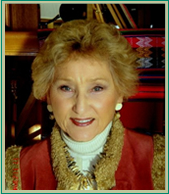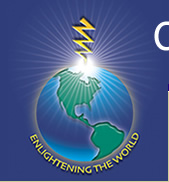
Harmony!
|
 |
|
| Christa Metzger Associate |
At this stage of my life I have come to embody the delicate balancing act between the head and the heart. German by birth, I often exhibit the analytical, self-critical nature that is reputed to be an innate part of the Teutonic bloodline. Now, having spent most of my adult life in America, I have learned to embrace the right-brain side of my nature. As a perfect example of how that duality exists uneasily within me, my first draft of this article had two footnotes in the title alone! The whole first section was given over to detailed definitions of Head, Heart, and Balance. Then, from that analytic opening, I moved on to discuss…people’s varying reactions to my two beloved dogs as we traveled abroad. Clearly I am well suited to be writing on this theme.
Not long ago, when I was a professor, I used an instrument with my graduate students in administration that assessed the extent to which students were oriented to achieve a task versus being more concerned about people. A task-oriented leader is more interested in getting something done and basing decisions on rules and logic. A people-oriented leader is more concerned with the human elements of organizations, and with treating people with caring and concern for their feelings. Many of my students were surprised at the results of their self-assessments. The discussions that followed always ended with a sobering realization: You must first know yourself and reflect on the impact of your actions on people as well as the accomplishment of organizational tasks.
How does this play out in practice? Let me use a simple example from my recent travel experiences. I just returned from several months in Germany with my two Shih Tsu dogs, which traveled in a carrier bag under the seat in front of me. Airlines have a rule that dogs must stay in their carrier during the whole trip, including in airport waiting areas. This is an example of a regulation without a heart; it would require that my dogs be shut in their bag for 18 hours or more.
In our trips across the ocean, my dogs and I met all kinds of people:
- Not surprisingly, there were the rule enforcers: “Put those dogs back into the bag!” Or the airport restroom guard who threatened to call security if I didn’t immediately seal one of my dogs into the bag even as I was giving him a drink (I don’t give them water or food on the plane).
- Others—more kind, tolerant, and understanding—allowed me to open the door of the carrier so the dogs could stretch out, or even sleep in my lap if my neighbor didn’t mind.
- Customs officials who strictly enforced the rule not to bring any food items into the U.S. They confiscated my sealed can of dog food which I had brought so that I could feed them upon arrival, while waiting for my next plane.
In educational organizations, just as in all aspects of human life, both head and heart are important. As a school district superintendent, I valued task-oriented people who paid attention to the policies and rules. They kept us out of legal hot water. But organizations also need persons who reveal the heart of the institution. Individuals need to be treated with heart. Work teams need a balance of head people and heart people to get the best results. Groups often sacrifice heart and blindly live by the professed credo of their group—e.g., mobs, gangs, unions, and political or religious institutions.
An interesting question is whether we are “hard wired” to be more one way or another. Some current research, called “epigenetics,” suggests that individual genes can be activated or deactivated by life experiences. In myths, legends, and fairy tales, it is a common theme that some natural characteristic can be changed—a timid hero gets courage, a dim-witted younger son wins the challenge, a fool receives wisdom, a tin man finds his heart.
Throughout my childhood, it was definitely the thinking, not the feeling, function that received highest priority. However, when I again took the Myers-Briggs Personality Inventory in recent years, I was pleased (and a bit astounded) that I was becoming more introverted (from extroverted) and more focused on feeling than on thinking. Philosophers, psychologists, and spiritual leaders often mention the theme of integration, of working toward wholeness. This seems to be especially important after one reaches mid-life.
Head and heart are two sides of the same coin, two extensions around a center point. Think about some “opposites” and reflect on how each pole contains something of the other pole within it: inner and outer, rational and intuitive, unity and diversity, creativity and stability, material and spiritual, beginnings and endings, life and death, pain and joy, light and dark, summer and winter. Balance is the fulcrum, the midpoint that supports and guides the two sides. Being in balance, becoming whole, means being aware of both poles. Know your strength and build on that, but dialogue with your non-dominant side before acting.
Balancing and harmonizing head and heart is a practice that applies to just about everything—from your life goals to daily decisions. For example, in planning for retirement, your heart may tell you that you want to travel the world. In relationships and interaction with others, your heart wants to feed all the hungry children of the world and to always show loving compassion toward everyone. Your head may present a different reality for your consideration.
How do you find your center (your heart), as well as listen to your head (your intellect) in all actions? For me, it means finding time to be still and having an open mind (heart and head)—to listen to both, to recognize the beginning in the ending, the promise in the suffering, to accept that it can rarely be all or nothing. Nature’s fiercest storms have to rage before the calm sets in. It takes time to find balance—over and over again! Then, to be grateful for whatever balance we can manage. Let that harmony be our resolve!
![]()
Center for Empowered Leadership ®
Email: info@cfel.org
Phone: 1.609.259.7911
